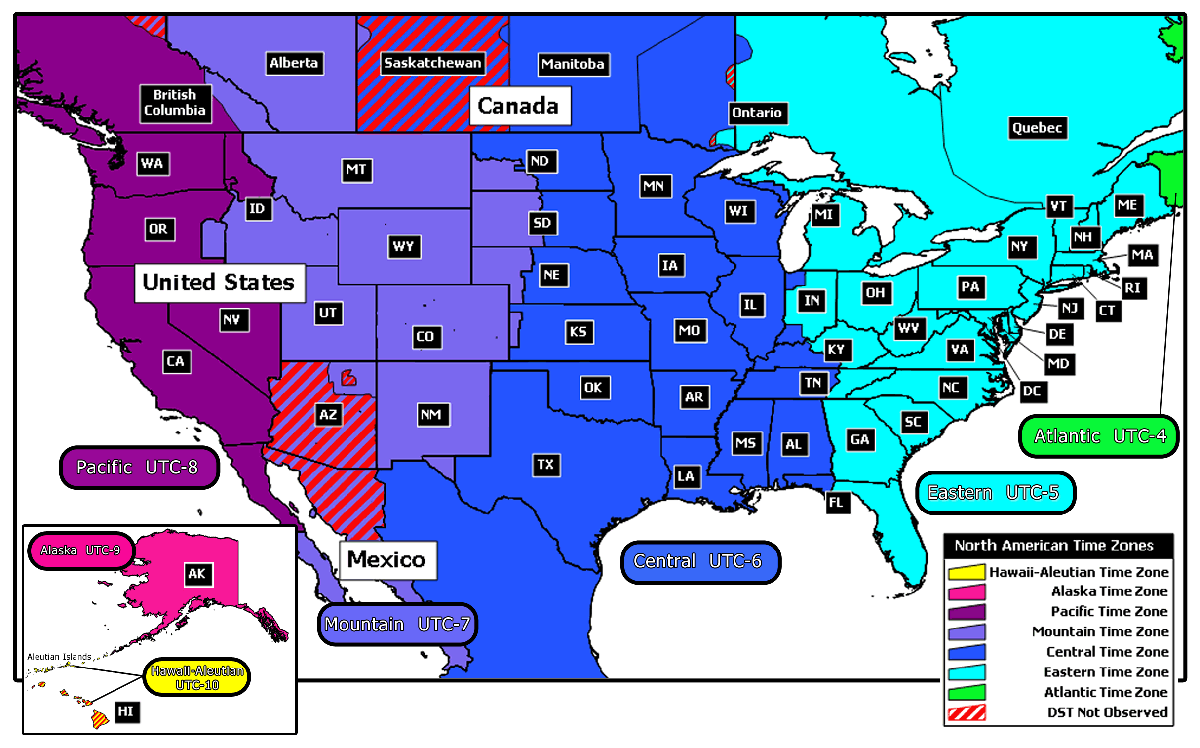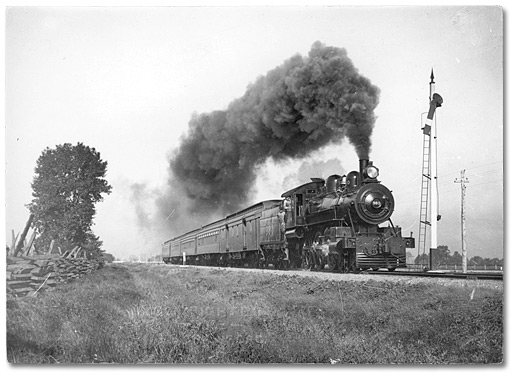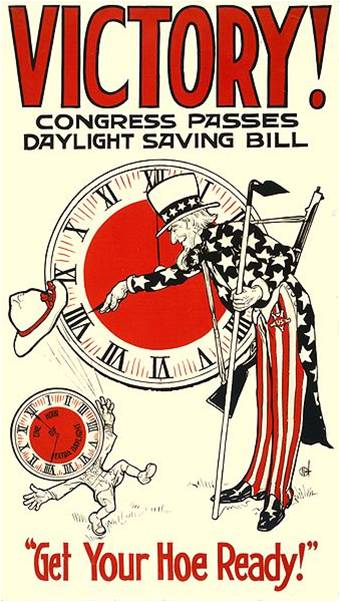If you're going to catch a train, you have to know when to get to the station. Simple now, but not then. In the days of early American railroads, each line used its own time based on the local time of the city in which it was headquartered. This is a very significant problem for long-distance trains, and it only gets worse with over 80 different railroad times by the late 1880s (Bartky 48). Consider the following problem for illustration:
Train A leaves Los Angeles for New York at 10:00 am, and travels at 100 mph. Train B leaves New York for Los Angeles at 1:00 pm, also traveling at 100 mph (assume that the trains leave simultaneously). What time is it when the trains pass each other in Oklahoma City, about 1,400 miles each from New York and Los Angeles?
Because both trains keep their clocks set in accordance with their city of origin, there are three different answers to this problem, depending on whether you use A's time, B's time, or Oklahoma City's time! (Extra credit if you actually calculated the answers.)
Exacerbating the problem is the fact that the US is simply too wide to use one time for the whole country; the sun would rise and set at very odd times at the coasts if time were normalized to Kansas. Charles Dowd in the 1870s proposed a "National Time," partitioning the country into four 1-hour sections based on 15 degree intervals (15 degrees = 1 hour, based on 360 degrees divided by 24 hours) from the Washington, DC meridian, but his idea was largely forgotten and ignored (Bartky 72). On November 18, 1883, however, all North American railroads adopted Standard Railway Time, four local time differing from each other by one hour. Almost immediately local cities wisely changed their official time to match that of the local trains, creating zones of cities with the same time (Bartky 72). Thus, after many complicated details here omitted, were born the time zones we observe today.
It is interesting to observe that the adoption of a national system of time originated from a business agreement, driven at least by economic considerations (more people can catch a train if they don't have to do math to figure out when to get there). The federal government was relatively late to adopt the system; it started at a local level based on fairly individual concerns. Also, people who frequently travel across time zones must learn to keep two different times simultaneously, precisely what time zones were supposed to avoid!
The other significant national time development is Daylight Savings Time (DST). Not everyone was or is a fan of fussing with the clocks:
"The seasonal meddling with the clocks cannot... be justified from a scientific point of view... For a nation to do this by legislation would be the height of folly."
-Nature, 1908 (Bartky 161)
Congress continues to receive letters saying that the twice yearly clock changing is an "abomination" (O'Malley 310).
I will again bypass the political journey by which DST became enacted, except to mention the following points:
*As with time zones, the official time is changed based on economic considerations (saving energy) and personal motivations (getting more daylight during the day). We deliberately ignore the sun, the historical source of time, in determining the agreed-upon time.
*DST was changed again in 2007, when it began to start earlier and end later than before. We can change the time more or less at our will.
*DST is not uniform across the US. Arizona, for instance, does not observe DST. But the Navajo Nation in Arizona does. But the Hopi Nation in the Navajo Nation does not (http://www.experiencehopi.com/faq.html). Yes, I'm confused, too.
Notice the little regions that differ from the surrounding area in DST observance, both in Arizona and in Ontario and Saskatchewan.
 (image source)
(image source)
The Clock main page: Nathan's Thing / Time as Social Concept / Clock as Social Object / (Im)Precision in Time / Yesterday and Tomorrow / To Catch a Train / Experiencing the Clock



